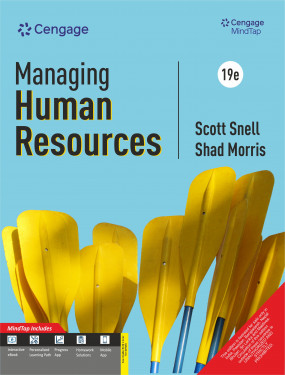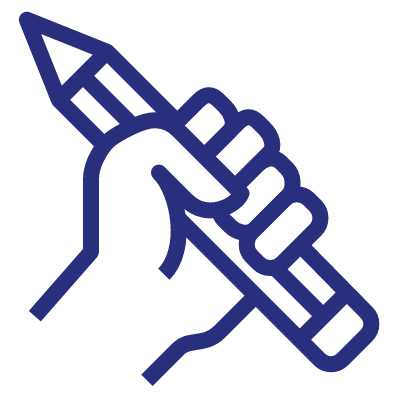Part 1 Foundations of Human Resource Development
1 Introduction to Human Resource Development
Introduction
The Progression Toward a Field of Human Resource Development
The Relationship Between Human Resource Management and HRD/Training
Human Resource Development Functions
Roles and Competencies of an HRD Professional
Challenges to Organizations and to HRD Professionals
A Framework for the HRD Process
Organization of the Text
Summary
Questions for Discussion
Exercise: Interview an HRD Professional
Summaries and Questions for Business Insights Readings
Notes
2 Influences on Employee Behavior
Introduction
Model of Employee Behavior
External influences on Employee Behavior
Motivation: A Fundamental Internal Influence on Employee Behavior
Other Internal Factors that Influence Employee Behavior
Summary
Questions for Discussion
Exercise 1: Increasing Employee Motivation
Exercise 2: Motivation Theories and You
Summaries and Questions for Business Insights Readings
Notes
3 Learning and HRD
Introduction
Learning and Instruction
Maximizing Learning
A New Focus on Informal Learning
Individual Differences in the Learning Process
Learning Styles and Strategies
Further Contributions from Instructional and Cognitive Psychology
Summary
Questions for Discussion
Exercise 1: Learning Styles
Exercise 2: Vark Questionnaire
Summaries and Questions for Business Insights Readings
Notes
Part 2 Framework for Human Resource Development
4 Assessing HRD needs
Introduction
Strategic/Organizational Analysis
Task Analysis
Person Analysis
Competency Modeling
Prioritizing HRD Needs
The HRD Process Model Debate
Summary
Questions for Discussion
Exercise: Conducting a Task Analysis
Integrative Case: Cathay Pacific Airways
Summaries and Questions for Business Insights Readings
Notes
5 Designing Effective HRD Programs
Introduction
Defining the Objectives of the HRD Intervention
The “Make-Versus-Buy” Decision: Creating or Purchasing HRD Programs
Selecting the Trainer
Selecting Training Methods and Media
Preparing Training Materials
Scheduling an HRD Program
Summary
Questions for Discussion
Exercise 1: Objective Writing for a Diversity Training Program
Exercise 2: Objective Writing and Design Decisions for a Training Program of your Choice
Summaries and Questions for Business Insights Readings
Notes
6 Implementing HRD Programs
Introduction
Training Delivery Methods
On-The-Job Training (OJT) Methods
Job Instruction Training (JIT)
Classroom Training Approaches
The Lecture Approach
The Discussion Method
Audiovisual Media
Promoting Learner Reflection
Computer-Based Training (Classroom-Based)
Self-Paced/Computer-Based Training Media and Methods
Some Final Issues Concerning Training Program Implementation
Arranging the Physical Environment
Getting Started
Summary
Questions for Discussion
Exercise 1: Generating Questions to Use When Leading a Discussion
Exercise 2: Designing E-Learning Materials
Integrative Case: HSBC’s Climate Champions Programme
Summaries and Questions for Business Insights Readings
Notes
7 Evaluating HRD Programs
Introduction
The Definition and Purpose of HRD Evaluation
How Often are HRD Programs Evaluated?
The Evaluation of Training and HRD Programs Prior to Purchase
Changing Evaluation Emphases
Models and Frameworks of Evaluation
Kirkpatrick’s Evaluation Framework
Other Frameworks or Models of Evaluation
Comparing Evaluation Frameworks
A Stakeholder Approach to Training Evaluation
Data Collection for HRD Evaluation
Data Collection Methods
Choosing Data Collection Methods
Types of Data
The Use of Self-Report Data
Research Design
Ethical Issues Concerning Evaluation Research
Assessing the Impact of HRD Programs In Monetary Terms
How Technology Impacts HRD Evaluation
Closing Comments on HRD Evaluation
Summary
Questions for Discussion
Exercise: Calculating the Costs and Benefits of Training
Integrative Case: What Went Wrong at University Hospital?
Appendix 7-1 More on Research Design
Research Design Validity
Nonexperimental Designs
Experimental Designs
Quasi-Experimental Designs
Statistical Power: Ensuring that a Change Will Be Detected If One Exists
Selecting a Research Design
Summaries and Questions for Business Insights Readings
Notes
Part 3 Human Resource Development Applications
8 Onboarding: Employee Socialization and Orientation
Introduction
Socialization: The Process of Becoming an Insider
Various Perspectives on the Socialization Process
The Realistic Job Preview
Summary
Questions for Discussion
Exercise: Designing a Technology-Enhanced Orientation Program
Summaries and Questions for Business Insights Readings
Notes
9 Skills and Technical Training
Introduction
Basic Workplace Competencies
Basic Skills/Literacy Programs
Technical Training
Interpersonal Skills Training
Role of Labor Unions in Skills and Technical Training Programs
Professional Development and Education
Summary
Questions for Discussion
Exercise: Evaluating a Class Project Team
Summaries and Questions for Business Insights Readings
Notes
10 Coaching and Performance Management
Introduction
The Need for Coaching
Coaching: A Positive Approach to Managing Performance
Coaching and Performance Management
Definition of Coaching
Role of the Supervisor and Manager in Coaching
The HRD Professional’s Role in Coaching
Coaching to Improve Poor Performance
Defining Poor Performance
Responding to Poor Performance
Conducting the Coaching Analysis
Maintaining Effective Performance and Encouraging Superior Performance
Skills Necessary for Effective Coaching
The Effectiveness of Coaching
Employee Participation in Discussion
Being Supportive
Using Constructive Criticism
Setting Performance Goals During Discussion
Training and The Supervisor’s Credibility
Organizational Support
Closing Comments on Coaching and Performance Management
Summary
Questions for Discussion
Exercise 1: Design your Own Performance Management System
Exercise 2: Conduct a Performance Review Meeting
Summaries and Questions for Business Insights Readings
Notes
11 Employee counseling, well-being, and wellness
Introduction
An Overview of Employee Counseling Programs
Employee Assistance Programs
Stress Management Interventions
Employee Wellness and Health Promotion Programs
Exercise and Fitness Interventions
Smoking Cessation
Issues in Employee Counseling
Closing Comments
Summary
Questions for Discussion
Exercise: How are You Dealing with Stress?
Integrative Case Study: Wellness Efforts at KPMG
Summaries and Questions for Business Insights Readings
Notes
12 Career Management and Development
Introduction
Defining Career Concepts
Stages of Life and Career Development
Models of Career Development
The Process of Career Management
Roles in Career Management
Career Development Practices and Activities
Issues in Career Development
Delivering Effective Career Development Systems
Summary
Questions for Discussion
Exercise 1: A Career-Planning Essay
Exercise 2: The Five-Year Resume
Summaries and Questions for Business Insights Readings
Notes
13 Management Development
Introduction
Describing the Manager’s Job: Roles and Competencies
Approaches to Understanding the Job of Managing
Making Management Development Strategic
Management Education
Bachelor’s and Master’s Degree Programs in Business Administration
Executive Education Programs
Management Training and Experiences
Examples of Approaches Used to Develop Managers
Designing Effective Management Development Programs
Summary
Questions for Discussion
Exercise: Profiling an Effective Leader
Integrative Case: Training General Managers at Bristol-Myers-Squibb
Summaries and Questions for Business Insights Readings
Notes
14 Organization Development and Change
Introduction
Organization Development Theories and Concepts
Model of Planned Change
Designing an Intervention Strategy
Types of Interventions: Human Process-Based
Types of Interventions: Techno-Structural
Types of Interventions: Sociotechnical Systems
Types of Interventions: Organizational Transformation
Whither Organization Development?
Summary
Questions for Discussion
Exercise: Force Field Analysis and You
Integrative Case: A Problem at Metro Transit
Summaries and Questions for Business Insights Readings
Notes
15 HRD and Diversity: Diversity Training and Beyond
Introduction
Organizational Culture
Labor-Market Changes and Discrimination
Adapting to Demographic Changes
Cross-Cultural Education and Training Programs
Human Resource Development Programs for Culturally Diverse Employees
Other Human Resource Management Programs and Processes
Closing Comments
Summary
Questions for Discussion
Exercise 1: Views on Diversity
Exercise 2: IBM and “Diversity and Inclusion”
Summaries and Questions for Business Insights Readings
Notes
Glossary
Index

























